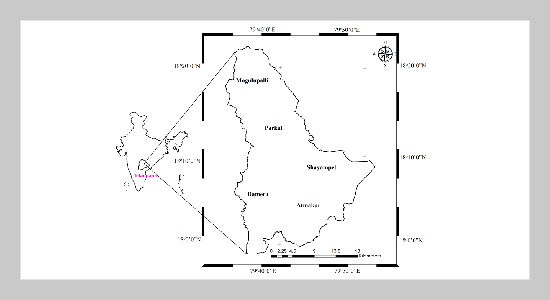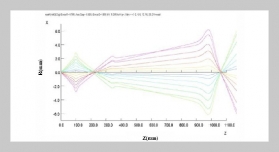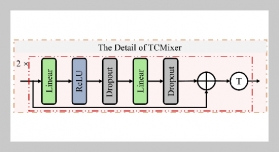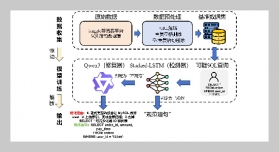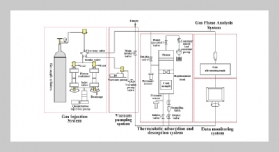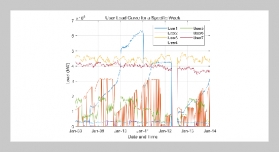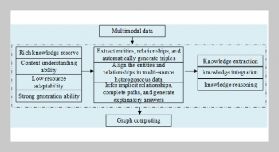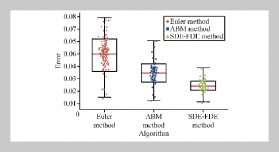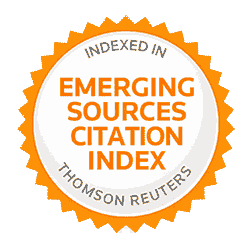- [1] C. Mayee, (2009) “Bt Cotton in India: Current Status and Impact on Textile Industry" Proc. Natl. Acad. Sci. India Sect. B - Biol. Sci. 79: 195–211.
- [2] T. Gerik, D. Oosterhuis, and H. Torbert, (1998) “Managing Cotton Nitrogen Supply" Adv. Agron. 64: 115– 147. DOI: 10.1016/S0065-2113(08)60503-9.
- [3] K. Reddy, H. Hodges, and J. McKinion, (1997) “A Comparison of Scenarios for the Effect of Global Climate Change on Cotton Growth and Yield" Aust. J. Plant Physiol. 24: 707–713. DOI: 10.1071/PP96138.
- [4] D. Bisht, V. Sridhar, A. Mishra, C. Chatterjee, and N. Raghuwanshi, (2019) “Drought Characterization over India under Projected Climate Scenario" Int. J. Climatol. 39: 1889–1911. DOI: 10.1002/joc.5922.
- [5] J. Das, V. Manikanta, and N. V. Umamahesh, (2022) “Population Exposure to Compound Extreme Events in India under Different Emission and Population Scenarios" Sci. Total Environ. 806: DOI: 10.1016/j.scitotenv.2021.150424.
- [6] N. Kumar, M. Kumar Goyal, A. Kumar Gupta, S. Jha, J. Das, and C. Madramootoo, (2021) “Joint Behaviour of Climate Extremes across India: Past and Future" J. Hydrol. 597: 126185. DOI: 10.1016/j.jhydrol.2021.126185.
- [7] S. Mukherjee, S. Aadhar, D. Stone, and V. Mishra, (2018) “Increase in Extreme Precipitation Events under Anthropogenic Warming in India" Weather Clim. Extrem. 20: 45–53. DOI: 10.1016/j.wace.2018.03.005.
- [8] S. Sharma and P. Mujumdar, (2017) “Increasing Frequency and Spatial Extent of Concurrent Meteorological Droughts and Heatwaves in India" Sci. Rep. 7: 15582. DOI: 10.1038/s41598-017-15896-3.
- [9] S. Dixit and K. V. Jayakumar, (2022) “Spatio-Temporal Analysis of Copula-Based Probabilistic Multivariate Drought Index Using CMIP6 Model" Int. J. Climatol. 42: 4333–4350. DOI: 10.1002/joc.7469.
- [10] S. Dixit, B. Atla, and K. V. Jayakumar, (2022) “Evolution and Drought Hazard Mapping of Future Meteorological and Hydrological Droughts Using CMIP6 Model" Stoch. Environ. Res. Risk Assess. 36: 3857–3874. DOI: 10.1007/s00477-022-02230-1.
- [11] M. Velpuri, J. Das, and N. V. Umamahesh, (2023) “Spatio-Temporal Compounding of Connected Extreme Events: Projection and Hotspot Identification" Environ. Res. 235: DOI: 10.1016/j.envres.2023.116615.
- [12] M. Malla and D. Arya, (2023) “Event-Based Extreme Precipitation Variability Analysis over a Part of the Hindu Kush Himalayan Region" Int. J. Climatol. DOI: 10.1002/joc.8082.
- [13] R. Mall, M. Lal, V. Bhatia, L. Rathore, and R. Singh, (2004) “Mitigating Climate Change Impact on Soybean Productivity in India: A Simulation Study" Agric. For. Meteorol. 121: 113–125. DOI: 10.1016/S0168-1923(03) 00157-6.
- [14] N. Singh, B. Anand, K. V. Rao, and P. Ranjith, (2020) “Spatial and Temporal Assessment of Climate Impact on Agriculture in Plateau Region, India" J. Agrometeorol. 22: 351–359.
- [15] P. Birthal, D. Negi, S. Kumar, S. Aggarwal, A. Suresh, and M. Tajuddin Khan, (2014) “How Sensitive Is Indian Agriculture to Climate Change?" Indian J. Agric. Econ. 69: 474–487.
- [16] K. Palanisami, C. Ranganathan, K. Kakumanu, and U. Nagothu, (2011) “A Hybrid Model to Quantify the Impact of Climate Change on Agriculture in Godavari Basin, India" Energy Environ. Res. 1: 32–52. DOI: 10. 5539/eer.v1n1p32.
- [17] R. Gupta and A. Mishra, (2019) “Climate Change Induced Impact and Uncertainty of Rice Yield of AgroEcological Zones of India" Agric. Syst. 173: 1–11. DOI: 10.1016/j.agsy.2019.01.009.
- [18] S. Dixit, V. Neethin, and K. V. Jayakumar, (2023) “Assessment of Crop-Drought Relationship: A Climate Change Perspective" Water Resour. Manag. DOI: 10.1007/s11269-023-03540-x.
- [19] V. Reddy and D. Zhao, (2005) “Interactive Effects of Elevated CO2 and Potassium Deficiency on Photosynthesis, Growth, and Biomass Partitioning of Cotton" F. Crop. Res. 94: 201–213. DOI: 10.1016/j.fcr.2005.01.004.
- [20] K. Hebbar, M. V. Venugopalan, A. Prakash, and P. Aggarwal, (2013) “Simulating the Impacts of Climate Change on Cotton Production in India" Clim. Change 118: 701–713. DOI: 10.1007/s10584-012-0673-4.
- [21] X. Chen, Z. Qi, D. Gui, Z. Gu, L. Ma, F. Zeng, and L. Li, (2019) “Simulating Impacts of Climate Change on Cotton Yield and Water Requirement Using RZWQM2" Agric. Water Manag. 222: 231–241. DOI: 10.1016/j.agwat.2019.05.030.
- [22] P. Adhikari, S. Ale, J. Bordovsky, K. Thorp, N. Modala, N. Rajan, and E. Barnes, (2016) “Simulating Future Climate Change Impacts on Seed Cotton Yield in the Texas High Plains Using the CSM-CROPGROCotton Model" Agric. Water Manag. 164: 317–330. DOI: 10.1016/j.agwat.2015.10.011.
- [23] Y. Yang, Y. Yang, S. Han, I. Macadam, and D. Liu, (2014) “Prediction of Cotton Yield and Water Demand under Climate Change and Future Adaptation Measures" Agric. Water Manag. 144: 42–53. DOI: 10.1016/j.agwat.2014.06.001.
- [24] J. Jones, G. Hoogenboom, C. Porter, K. Boote, W. Batchelor, L. Hunt, P. Wilkens, U. Singh, A. Gijsman, and J. Ritchie, (2003) “The DSSAT Cropping System Model" Eur. J. Agron. 18: 235–265. DOI: 10.1016/S1161-0301(02)00107-7.
- [25] R. McCown, G. Hammer, J. Hargreaves, D. Holzworth, and D. Freebairn, (1996) “APSIM: A Novel Software System for Model Development, Model Testing and Simulation in Agricultural Systems Research" Agric. Syst. 50: 255–271. DOI: 10.1016/0308-521X(94)00055-V.
- [26] B. Keating, P. Carberry, G. Hammer, M. Probert, M. Robertson, D. Holzworth, N. Huth, J. Hargreaves, H. Meinke, Z. Hochman, et al., (2003) “An Overview of APSIM, a Model Designed for Farming Systems Simulation" Eur. J. Agron. 18: 267–288. DOI: 10.1016/S1161-0301(02)00108-9.
- [27] J. Williams, C. Jones, J. Kiniry, and D. Spanel, (1989) “EPIC Crop Growth Model" Trans. Am. Soc. Agric. Eng. 32: 497–511.
- [28] C. Stöckle, M. Donatelli, and R. Nelson, (2003) “CropSyst, a Cropping Systems Simulation Model" Eur. J. Agron. 18: 289–307. DOI: 10.1016/S1161-0301(02)00109-0.
- [29] T. Hsiao, L. Heng, P. Steduto, B. Rojas-Lara, D. Raes, and E. Fereres, (2009) “Aquacrop-The FAO Crop Model to Simulate Yield Response to Water: III. Parameterization and Testing for Maize" Agron. J. 101: 448–459. DOI: 10.2134/agronj2008.0218s.
- [30] T. Tuong and B. Bouman, (2000) “Field Water Management to Save Water and Increase Its Productivity in Irrigated Lowland Rice" Agric. Water Manag. 46: 161–165.
- [31] C. Onofkei and K. Smith, (1989) “SOIL USE A N D M A N A G E M E N T Volume 5. Number 1. March 1989" Soil Use Manag. 5: 16–24.
- [32] O. Adeboye, B. Schultz, K. Adekalu, and K. Prasad, (2019) “Performance Evaluation of AquaCrop in Simulating Soil Water Storage, Yield, and Water Productivity of Rainfed Soybeans (Glycine Max L. Merr) in Ile-Ife, Nigeria" Agric. Water Manag. 213: 1130–1146. DOI: 10.1016/j.agwat.2018.11.006.
- [33] P. Steduto, T. Hsiao, D. Raes, and E. Fereres, (2009) “Aquacrop-the FAO Crop Model to Simulate Yield Response to Water: I. Concepts and Underlying Principles" Agron. J. 101: 426–437. DOI: 10.2134/agronj2008.0139s.
- [34] M. Rashid, M. Jabloun, M. Andersen, X. Zhang, and J. Olesen, (2019) “Climate Change Is Expected to Increase Yield and Water Use Efficiency of Wheat in the North China Plain" Agric. Water Manag. 222: 193–203. DOI: 10.1016/j.agwat.2019.06.004.
- [35] D. Voloudakis, A. Karamanos, G. Economou, D. Kalivas, P. Vahamidis, V. Kotoulas, J. Kapsomenakis, and C. Zerefos, (2015) “Prediction of Climate Change Impacts on Cotton Yields in Greece under Eight Climatic Models Using the AquaCrop Crop Simulation Model and Discriminant Function Analysis" Agric. Water Manag. 147: 116–128. DOI: 10.1016/j.agwat.2014.07.028.
- [36] P. Wen, Q. Wei, L. Zheng, Z. Rui, M. Niu, C. Gao, X. Guan, T. Wang, and S. Xiong, (2023) “Adaptability of Wheat to Future Climate Change: Effects of Sowing Date and Sowing Rate on Wheat Yield in Three Wheat Production Regions in the North China Plain" Sci. Total Environ. 901: 165906. DOI: 10.1016/j.scitotenv.2023.165906.
- [37] D. Raes, P. Steduto, T. Hsiao, and E. Fereres, (2009) “Aquacrop-The FAO Crop Model to Simulate Yield Response to Water: II. Main Algorithms and Software Description" Agron. J. 101: 438–447. DOI: 10.2134/agronj2008.0140s.
- [38] A. Saltelli, S. Tarantola, and K. Chan, (1999) “A Quantitative Model-Independent Method for Global Sensitivity Analysis of Model Output" Technometrics 41: 39–56. DOI: 10.1080/00401706.1999.10485594.
- [39] R. Cukier, H. Levine, and K. Shuler, (1978) “Nonlinear Sensitivity Analysis of Multiparameter Model Systems" J. Comput. Phys. 26: 1–42. DOI: 10.1016/0021-9991(78) 90097-9.
- [40] I. Sobol’, (1993) “Sobol 1990_1993" Mmce 1: 407–414.
- [41] S. Andraddttir, K. Healy, D. Withers, and B. Nelson, (1997) “Andraddttir, S.; Healy, K.J.; Withers, D.H.; Nelson, B.L." Simulation 69: 261–268.
- [42] C. Müller, J. Franke, J. Jägermeyr, A. Ruane, J. Elliott, E. Moyer, J. Heinke, P. Falloon, C. Folberth, L. Francois, et al., (2021) “Exploring Uncertainties in Global Crop Yield Projections in a Large Ensemble of Crop Models and CMIP5 and CMIP6 Climate Scenarios" Environ. Res. Lett. 16: DOI: 10.1088/1748-9326/abd8fc.
- [43] Z. Zhang, Y. Li, X. Chen, Y. Wang, B. Niu, D. L. Liu, J. He, B. Pulatov, I. Hassan, and Q. Meng, (2023) “Impact of climate change and planting date shifts on growth and yields of double cropping rice in southeastern China in future" Agricultural Systems 205: 103581. DOI: https: //doi.org/10.1016/j.agsy.2022.103581.
- [44] W. Ishaque, R. Osman, B. S. Hafiza, S. Malghani, B. Zhao, M. Xu, and S. T. Ata-Ul-Karim, (2023) “Quantifying the impacts of climate change on wheat phenology, yield, and evapotranspiration under irrigated and rainfed conditions" Agricultural Water Management 275: 108017. DOI: https: //doi.org/10.1016/j.agwat.2022.108017.
- [45] J.-C. Pomerol and S. Barba-Romero. Multicriterion Decision in Management: Principles and Practice. Springer Publishing Company, Incorporated, 2012.
- [46] K. S. Raju, P. U. Sonali, and D. N. Kumar, (2017) “Ranking of CMIP5-based global climate models for India using compromise programming" Theoretical and Applied Climatology 128: 563–574.
- [47] H.-m. XING, X.-g. XU, Z.-h. LI, Y.-j. CHEN, H.-k. FENG, G.-j. YANG, and Z.-x. CHEN, (2017) “Global sensitivity analysis of the AquaCrop model for winter wheat under different water treatments based on the extended Fourier amplitude sensitivity test" Journal of Integrative Agriculture 16(11): 2444–2458. DOI: https: //doi.org/10.1016/S2095-3119(16)61626-X.
- [48] T. Chanapathi, S. Thatikonda, V. R. Keesara, and N. S. Ponguru, (2020) “Assessment of water resources and crop yield under future climate scenarios: A case study in a Warangal district of Telangana, India" Journal of Earth System Science 129(1): DOI: 10.1007/s12040-019-1294-3.
- [49] K. Thorp, K. DeJonge, G. Marek, and S. Evett, (2020) “Comparison of evapotranspiration methods in the DSSAT Cropping System Model: I. Global sensitivity analysis" Computers and Electronics in Agriculture 177: 105658. DOI: https: //doi.org/10.1016/j.compag.2020.105658.
- [50] V. Reddy, K. Reddy, and H. Hodges, (1995) “Carbon dioxide enrichment and temperature effects on cotton canopy photosynthesis, transpiration, and water-use efficiency" Field Crops Research 41(1): 13–23. DOI: https: //doi.org/10.1016/0378-4290(94)00104-K.
- [51] Y. Lu, T. P. Chibarabada, M. F. McCabe, G. J. De Lannoy, and J. Sheffield, (2021) “Global sensitivity analysis of crop yield and transpiration from the FAO-AquaCrop model for dryland environments" Field Crops Research 269: 108182. DOI: https: //doi.org/10.1016/j.fcr.2021.108182.
- [52] S. Seidel, T. Palosuo, P. Thorburn, and D. Wallach, (2018) “Towards improved calibration of crop models – Where are we now and where should we go?" European Journal of Agronomy 94: 25–35. DOI: https: //doi.org/10.1016/j.eja.2018.01.006.
- [53] V. K. Vema, K. Sudheer, A. Rohith, and I. Chaubey, (2022) “Impact of water conservation structures on the agricultural productivity in the context of climate change" Water Resources Management 36(5): 1627–1644. DOI: 10.1007/s11269-022-03094-4.
- [54] A. K. Sikka, M. F. Alam, and V. Mandave, (2022) “Agricultural water management practices to improve the climate resilience of irrigated agriculture in India" Irrigation and Drainage 71(S1): 7–26. DOI: 10.1002/ird.2696.


